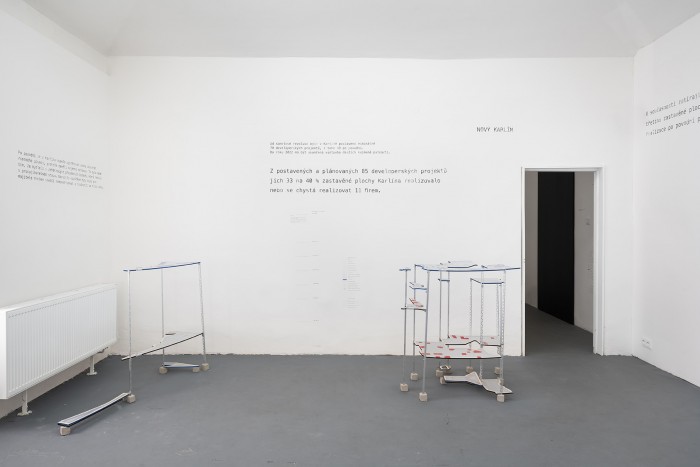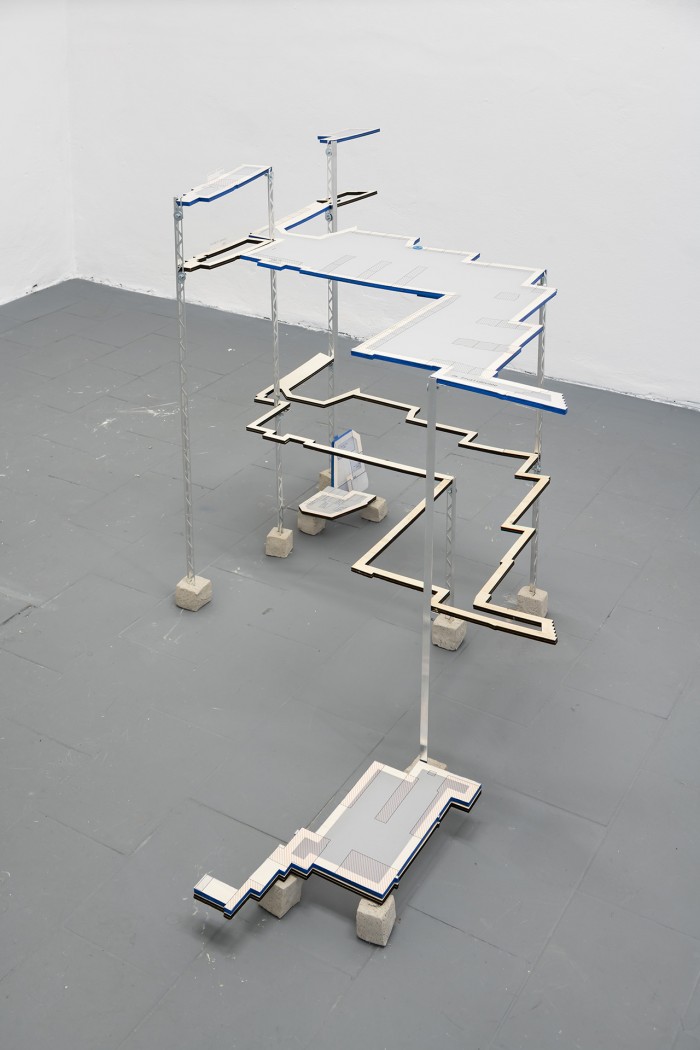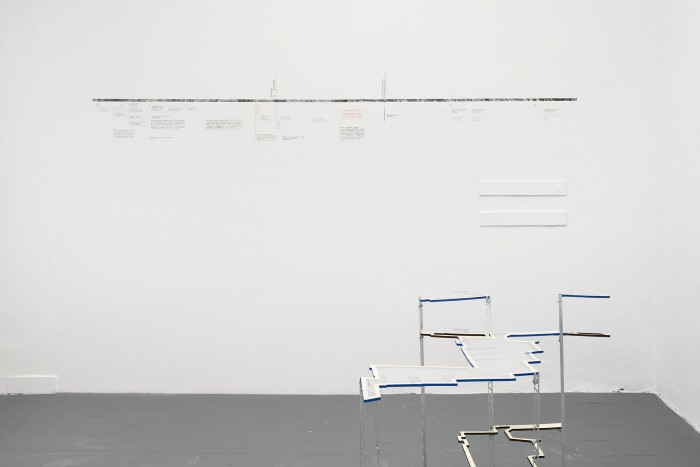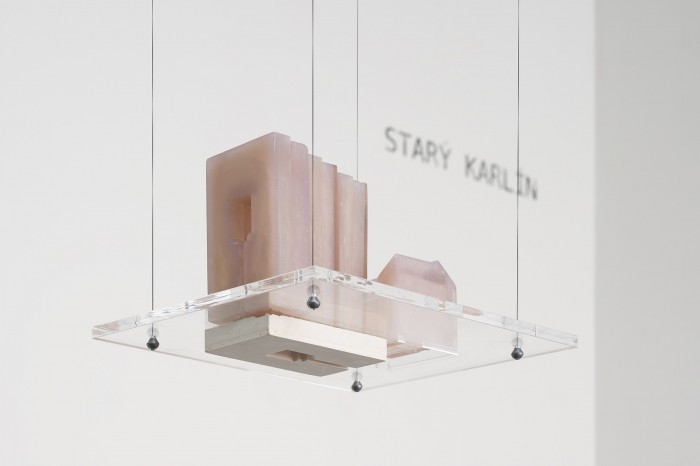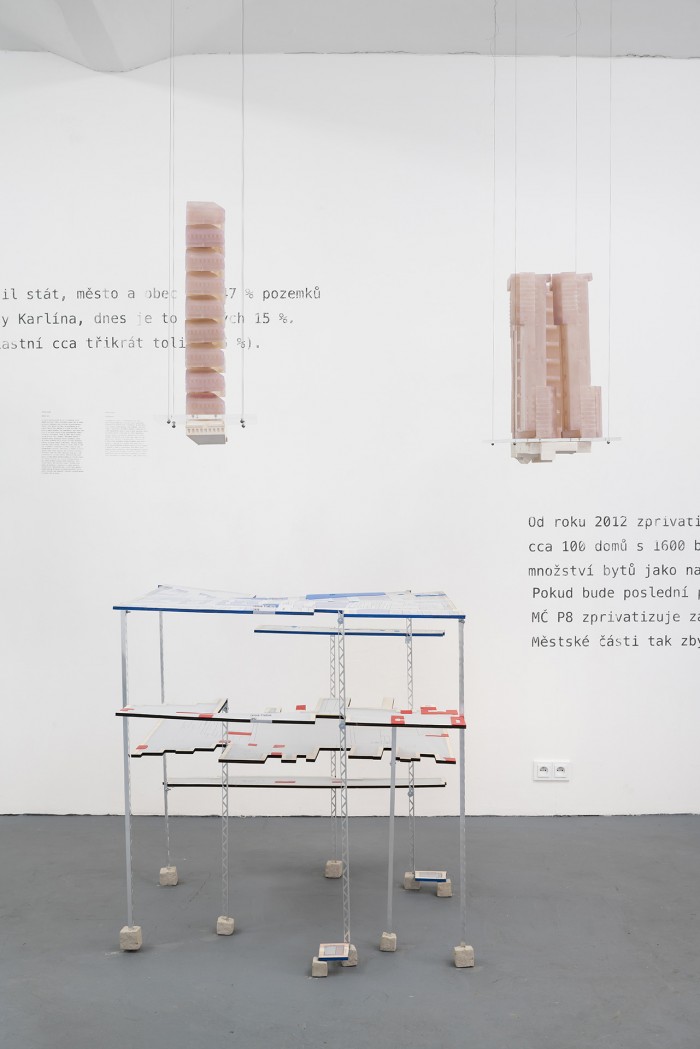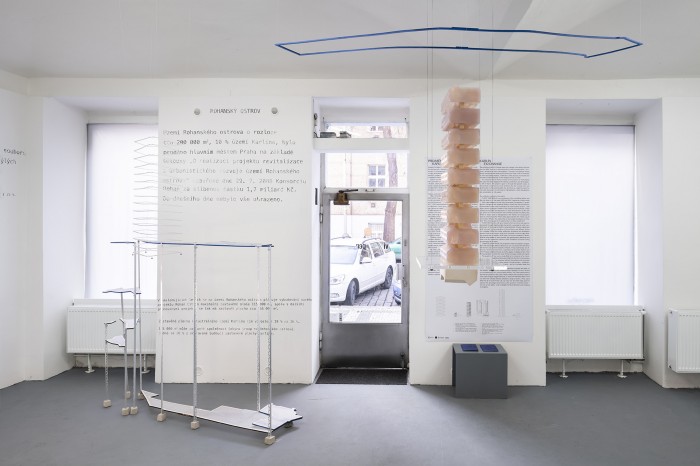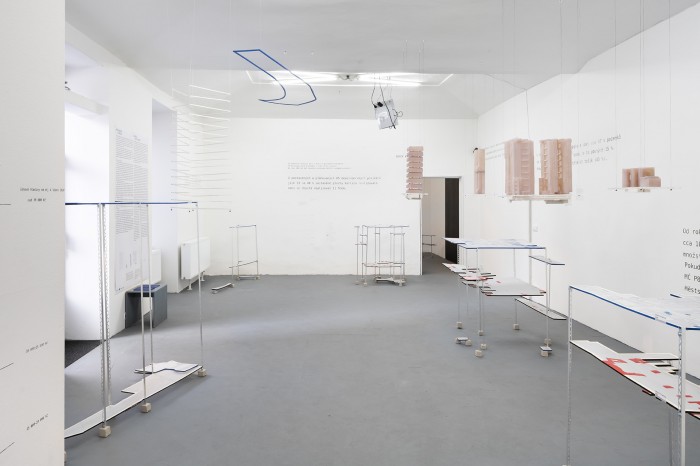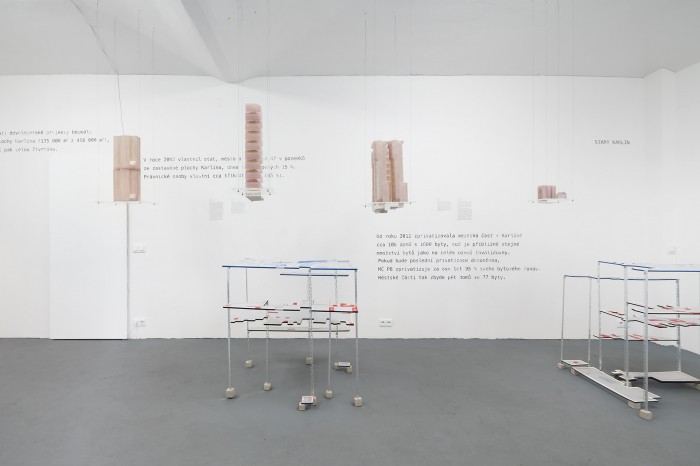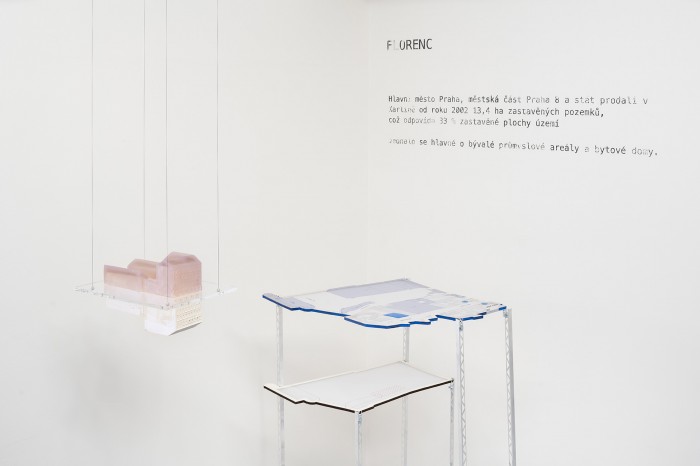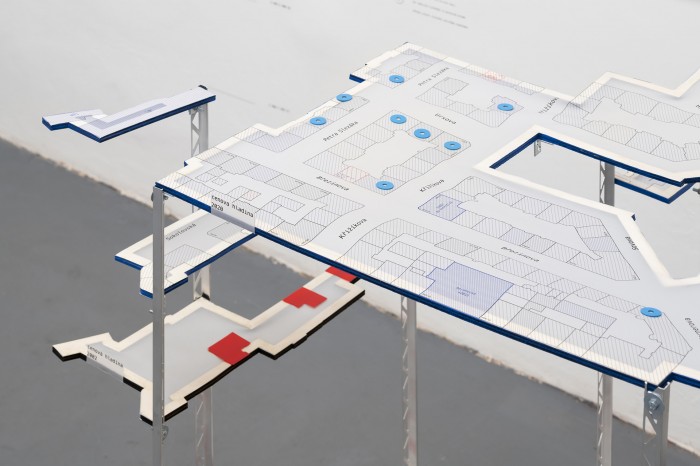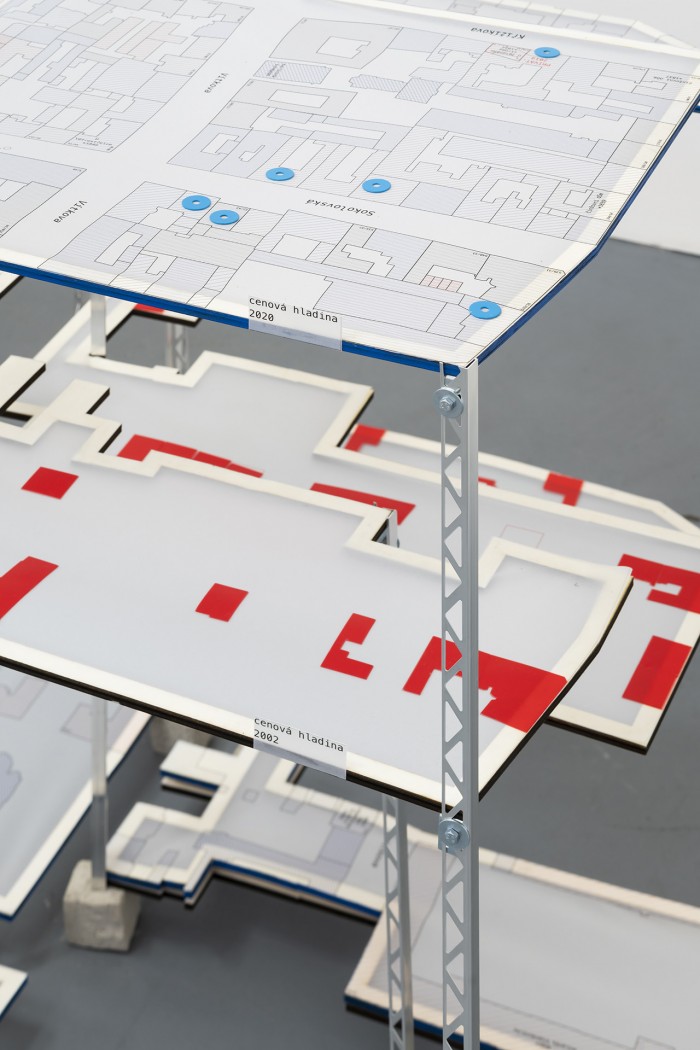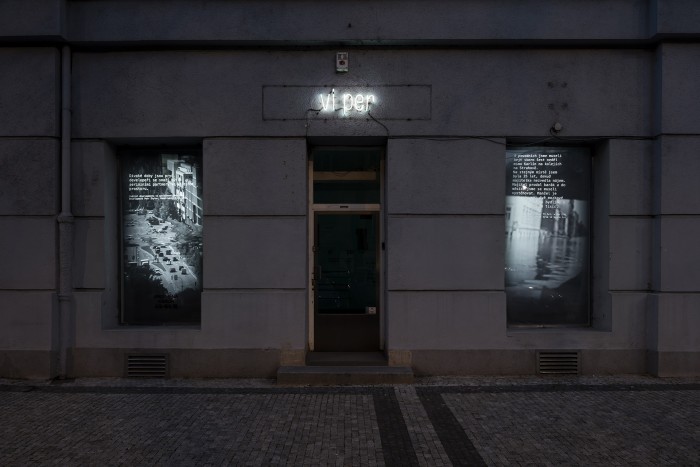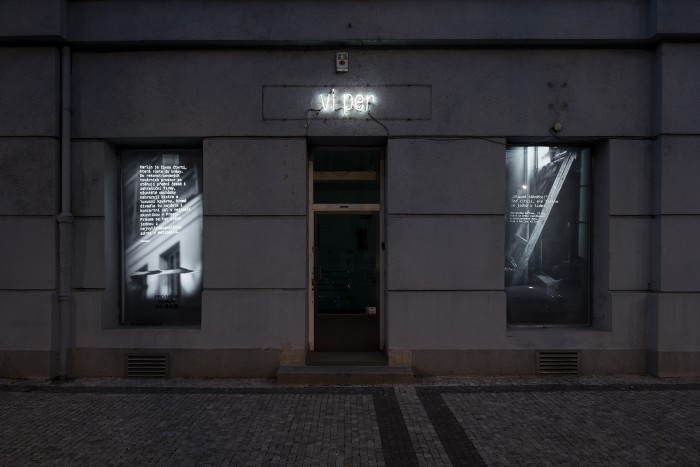Karlín Ex/Change
{~ '2020-03-04 00:00:00' | amDateFormat: 'D/M' ~}–{~ '2020-06-21 00:00:00' | amDateFormat: 'D/M/Y' ~}
Curator: Eliška Málková, Lynda Zein

The exhibition Karlín Ex/Change maps the changes in the district of Karlín from the 2002 flood up to the present from various perspectives – economic, architectural, socio-demographic. Through a comparison of land pricing, ownership and destruction/construction maps, with an emphasis on new real-estate projects, a reflection of the physical, functional and immaterial metamorphosis of this neighbourhood is made.
This research tries to find an answer to the question to what degree and extent the flood triggered the striking construction and demographic shift of Karlín. The project’s goal is, through this specific study, to demonstrate contemporary urban problems like the housing crisis and gentrification in the post-socialist city, and thus to create the basis for a broader discussion on the impacts of globalisation, urban deregulation and acceleration on city space.
The exhibition consists of two parts:
Flood Threshold is a comparison of the conditions before and after the flood, i.e. in the years 2002 and 2020. Fragments of Karlín (scale 1 : 500) make reference to the rising price level, privatisation of public spaces, changes in the cadastral division of land and the architectonic transformation of the urban landscape. Six case-statues (scale 1 : 250) depict various typologies of Karlín’s new buildings: 1) a new-build on open land on Rohan Island; 2) a new-build replacing an apartment block that collapsed during the flood; 3) a new-build on the site of a demolished heritage-protected residential house with suspicion surrounding its structural integrity evaluation; 4) a new build replacing an important industrial heritage object with the retainment of only a small fragment of the façade; 5) the reconstruction-retrofitting of a former factory hall; 6) the reconstruction-extension of an apartment block. These models are impulses for discussion on such phenomenon as the rent gap, genius loci or the extraction of the market potential of building sites.
Where is history used or disregarded in the interest of increasing the value of a new structure? When does space decline into merely a pure commodity? What is the relationship of real-estate developers to time, when their primary goal is the speed return on their investment? This level is completed by demographic, sociological and economic data, which allow the understanding of the situation 18 years after the flood.
Flood Sides works with grey material which cannot be calculated or expressed through objective data, but which is essential for a full comprehension of the image of Karlín’s metamorphosis. What is natural and what is forced? In the projections in the windows, two different stories run in parallel. While the media, politicians, architects and developers present Karlín as a phoenix rising from the ashes, or as the ugly duckling growing into a beautiful white swan, the former residents of Karlín, whether long-settled or newly arrived, see gentrification differently and relate a far less publicised narrative of the conditions of forced moving and everyday life in Karlín.
Created by David Přílučík, the projections were formulated in cooperation with sociologist Barbora Matysová, who conducted the interviews with former and current residents of Karlín. These testimonies are offered by members of both ethnic majorities and minorities: Karlín is one of the Prague neighbourhoods where the aspect of displacement of the Roma population outside the urban frontier emerges visibly and clearly.
The question of how over a single lifetime the character of an industrial Roma-Czech neighbourhood was shifted into the form of a luxurious global district cannot be answered without the political and economic contexts, such as the successive waves in housing policy – restitution, privatisation and (de)regulation of rents – and on a smaller scale, the specific practices of the developers.
The exhibition connects various fragments of stories and data. In this respect, the past is not viewed through nostalgia, but as a source for comprehending our post-socialist present. The urban phenomenon that we can observe in the case of Karlín reflects the precarious state of many other Prague neighbourhoods, in which the interests taken in the city shift with variable intensity between a range of actors. Thirty years after the fall of Communist rule, we may now be at the ideal point to balance the advantages and losses in the question of transformation – not only of city rights – and to debate the future direction and meaning of progress.
Photo: Zdeněk Porcal (Studio Flusser)
